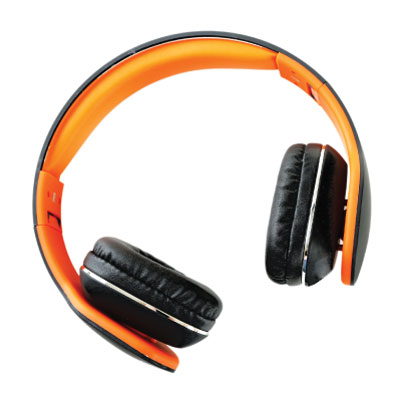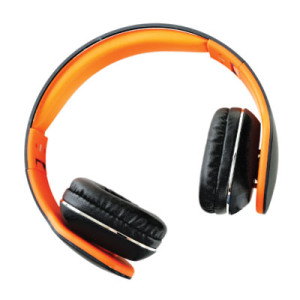
People with disabilities from culturally diverse communities sharing practical tips about living well. Listen to our content sorted by language at speakmylanguage.com.au The Speak My Language (Disability) program involves people with disabilities from culturally and linguistically diverse backgrounds, and other guest speakers, sharing practical tips and resources to support living well with a disability. Speak My Language (Disability) is funded by Commonwealth Department of Social Services and is proudly delivered via an historic partnership between all State and Territory Ethnic and Multicultural Communities‘ Councils across Australia.
Episodes

Friday Aug 19, 2022
Friday Aug 19, 2022
La vida de la mexicana Ana María Román cambió súbitamente al regresar de unas vacaciones por Europa. Días después de haber aterrizado de regreso a casa, en Australia, Ana comenzó a sentirse inusualmente cansada y con una sensación rara en el cuerpo. Una semana después, estaba postrada en una cama de cuidados intensivos conectada a un soporte de vida artificial.
El síndrome de Guillain-Barré es una afección neurológica poco común en la que el sistema inmunitario ataca los nervios que conectan el cerebro y la médula espinal con el resto del cuerpo.
“Básicamente desconecta las señales que van del cuerpo y los músculos hacia el cerebro”, explica Ana.
Por lo general, este síndrome ocasiona debilidad muscular aguda, pérdida de sensación en partes del cuerpo, cansancio e intenso dolor muscular. De acuerdo con los expertos, los primeros síntomas suelen ser debilidad y pérdida de sensibilidad en la piel, especialmente en las manos y los píes. Sin embargo, estas sensaciones pueden extenderse a otras partes del cuerpo y paralizar a la persona por completo. Eso fue lo que le sucedió a Ana.
“En una semana yo había perdido completamente la capacidad de todo. Ya no podía moverme. Ya no podía levantarme. Estaba completamente paralizada”.
La actitud positiva de Ana fue fundamental para enfrentar y superar esta crisis.
“Me di cuenta que lo único que podía hacer era visualizar que yo iba a salir caminando del hospital. Cuando había momentos en que mi estrés era tan alto que no podía manejarlo, mis amigos me trajeron meditaciones, le pedía a mi mamá que me pusiera meditaciones. Era impresionante, porque yo nunca había hecho meditaciones en mi vida, y eso me calmaba, me tranquilizaba y me hacía estar en paz”, evoca Ana.
Ana estuvo internada en la unidad de cuidados intensivos por dos meses, hasta que su parálisis comenzó a disminuir y los neurólogos comenzaron a ver signos de recuperación después de varias terapias. Entonces, Ana fue trasladada a un hospital de rehabilitación donde recibió un año de terapia intensiva para volver a aprender a caminar, hablar, ver e incluso respirar.
En la actualidad, Ana María Román lleva una vida plena y ha aprendido a vivir con las secuelas que le dejó la crisis de salud por la que atravesó. Sin embargo, ella tuvo que hacer varios ajustes para aprender a vivir con las discapacidades que el síndrome de Guillain-Barré le ha provocado, discapacidades que ella denomina “invisibles”.
“Otra discapacidad que también tengo es que mi motricidad fina está afectada. Si tú me ves, yo me muevo normal. Pero si hago cosas muy específicas, me cuesta mucho trabajo. Por ejemplo, escribir en la computadora o cortar la comida, abrir y cerrar cosas. Tengo que pedir ayuda. Es simple, pero si estoy sola y no puedo abrir un frasco, no lo uso. A veces es imposible hacerlo aún con los utensilios que tengo y las adaptaciones que me han hecho.”
Sin embargo, estas barreras no le han impedido a continuar con su vida. Si bien en el área laboral ha tenido que aprender nuevas estrategias para evitar la exclusión o discriminación por su condición de salud, admite que estos ajustes también la ayudaron a ser más asertiva.
“Me he involucrado en los comités de mi trabajo de discapacidad e inclusión para poder entender más el tema y también aportar. Con mis jefes he sido muy honesta desde el principio. He hablado con mis equipos de trabajo sobre mis vulnerabilidades, desde no poder tener la vacuna y tener que trabajar desde casa. Yo creo que eso ha sido clave en el proceso de mi recuperación: hablar y pedir lo que necesitas, a pesar de que te dé mucho miedo,” reconoce.
Ana ha tenido que pasar por un proceso de duelo para aceptar su nueva condición y estar en paz con su nueva identidad, que si bien ya no es el alma de la fiesta todo el tiempo, sigue siendo una mujer activa, energética, atlética y feliz, como lo dicta su esencia.
“Nada es permanente ni para siempre. Yo creo que eso me ayuda a aceptar y apreciar lo que tengo ahora y quién soy ahora. Aprendí que hoy estamos aquí, mañana quién sabe. Yo vivo la vida un día a la vez y trato de dar lo mejor de mí. Si tengo un mal día, siempre pienso que mañana tal vez sea un día mejor.”
About the guest speaker
(
The life of the Mexican Ana María Román suddenly changed when she returned from a vacation in Europe. Days after landing back home in Australia, Ana began to feel unusually tired and with a strange sensation in her body. A week later, she was bedridden in intensive care connected to artificial life support.
Guillain-Barré syndrome is a rare neurological condition in which the immune system attacks the nerves that connect the brain and spinal cord to the rest of the body. "Basically, it disconnects the signals that go from the body and the muscles to the brain," explains Ana.
This syndrome usually causes acute muscle weakness, loss of feeling in parts of the body, tiredness, and severe muscle pain. According to experts, the first symptoms are usually weakness and loss of sensation in the skin, especially in the hands and feet. However, these sensations can spread to other parts of the body and paralyse the person completely. That is what happened to Ana.
“Within a week I had completely lost the ability to do anything. I couldn't move anymore. I couldn't get up anymore. I was completely paralysed."
Ana's positive attitude was essential to face and overcome this crisis.
"I realised that the only thing I could do was visualise that I was going to walk out of the hospital. When there were times when my stress was so high that I couldn't handle it, my friends brought me meditations, I would ask my mom to put meditations on me. It was impressive, because I had never done meditation in my life, and that calmed me down, reassured me and made me feel at peace," recalls Ana.
Ana was in the intensive care unit for two months, until her paralysis began to subside and neurologists began to see signs of recovery after various therapies. Ana was then transferred to a rehabilitation hospital where she received a year of intensive therapy to relearn how to walk, talk, see and even breathe.
Currently, Ana María Román leads a full life and has learned to live with the impacts left by the health crisis she went through. However, she had to make several adjustments to learn to live with the disabilities that Guillain-Barré syndrome has caused her, disabilities that she calls "invisible."
“Another disability that I also have is that my fine motor skills are affected. If you see me, I move normally. But if I do very specific things, it costs me a lot of work. For example, typing on the computer or cutting food, opening and closing things. I have to ask for help. It's simple, but if I'm alone and I can't open a jar, I don't use it. Sometimes it is impossible to do it even with the tools I have and the adaptations that have been made to me.”
However, these barriers have not prevented him from continuing with her life. Although in the workplace she has had to learn new strategies to avoid exclusion or discrimination due to her health condition, she admits that these adjustments also helped her to be more assertive.
“I have been involved in the committees of my disability and inclusion work to be able to understand the issue more and also contribute. With my bosses I have been very honest from the beginning. I have spoken with my work teams about my vulnerabilities, from not being able to have the vaccine and having to work from home. I think that has been key in the process of my recovery: speaking up and asking for what you need, even though it scares you,” she admits.
Ana has had to go through a grieving process to accept her new condition and be at peace with her new identity. Although she is no longer the life of the party all the time, she is still an active, energetic, athletic and happy woman.
“Nothing is permanent or forever. I think that helps me to accept and appreciate what I have now and who I am now. I learned that today we are here, tomorrow who knows. I live life one day at a time and try to do my best. If I have a bad day, I always think that maybe tomorrow will be a better day.”
About the guest speaker
)

No comments yet. Be the first to say something!